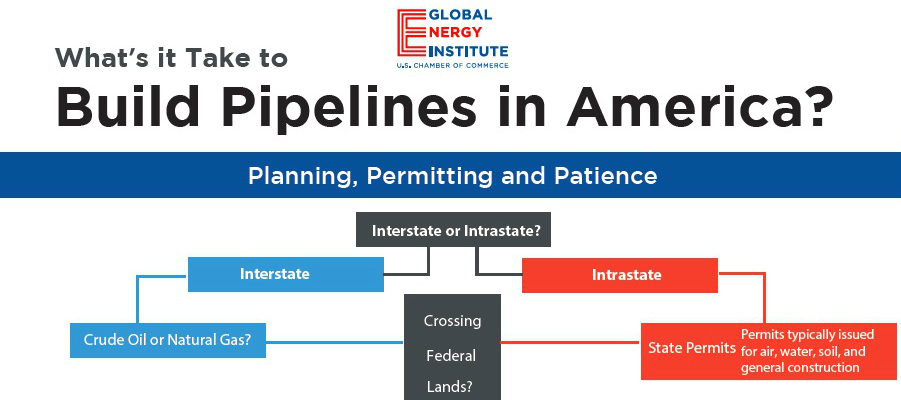By Matt Koch and Dan Byers
Pop quiz: which President issued the following clarion call for action on permitting reform?
"I will urge Congress to...cut through the red tape, the delays, and the endless roadblocks to completing key energy projects. We will protect our environment. But when this nation critically needs a refinery or a pipeline, we will build it."
While it sounds like something that one might find in a State of the Union address from President Trump, the quote actually comes from President Jimmy Carter circa 1979, demonstrating that red tape and roadblocks are nothing new when it comes to permitting energy infrastructure.
Unfortunately, in the nearly 40 years since President Carter’s request to Congress, these obstacles to new infrastructure have only piled up. To illustrate this, we developed this infographic depicting the many federal regulatory permits and reviews that a natural gas pipeline may need before being built.
What does this tell us? –With even just a cursory review of this graphic, one can see the enormous time and complexity involved with getting approval to build pipelines. (By the way, our infographic only shows federal processes; state and local permitting regimes add additional layers to this puzzle.) While this complex web of studies, reviews, and public input is surely well-intended, it is clear that opportunities exist to streamline and improve this system.
Beyond bureaucratic inefficiencies, it is important to recognize that nearly all of these processes provide ample opportunity for opponents to try to delay and stop energy infrastructure projects. For example, the Atlantic Coast Pipeline project estimates that it will need more than 2,500 permits from local, state and federal agencies before the pipeline is in use. Unfortunately, and despite the proven safety of pipelines, environmental activist groups are exploiting these requirements to stop ACP and other infrastructure projects and progress.
These attacks are organized around the concept of “Keep it in the Ground” (KIITG), an extremist movement committed to blocking as many energy infrastructure and development projects as they can – pipelines and transportation networks, power plants and transmission lines, export facilities, and much more.
What Does it Mean? – Despite the best intentions of our existing systems, these permitting obstacles and abuses mean many important infrastructure projects will not get built. Many others will be unnecessarily delayed, and uncertainties created by the permitting morass will stop some investments before they even get off the ground.
What Can Be Done? – Congress and the President have an historic opportunity to address the problems that were identified by President Carter so long ago, and are now being exacerbated by KIITG activists. Including federal permitting reform and streamlining in ANY infrastructure spending package considered by Congress has to be done to ensure that much needed projects are built.


